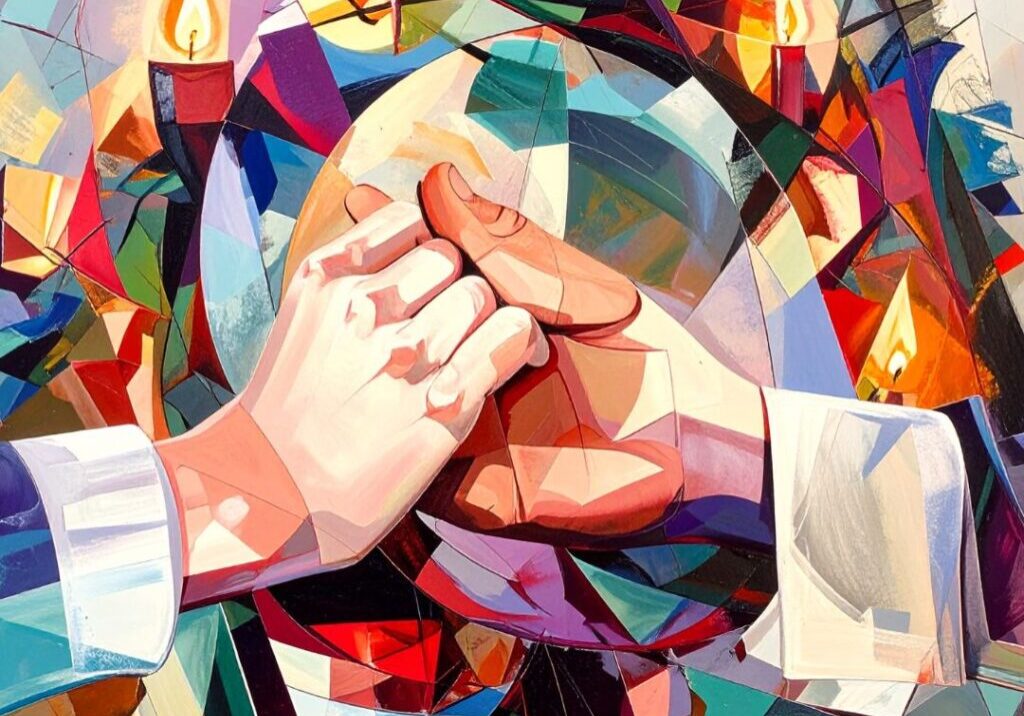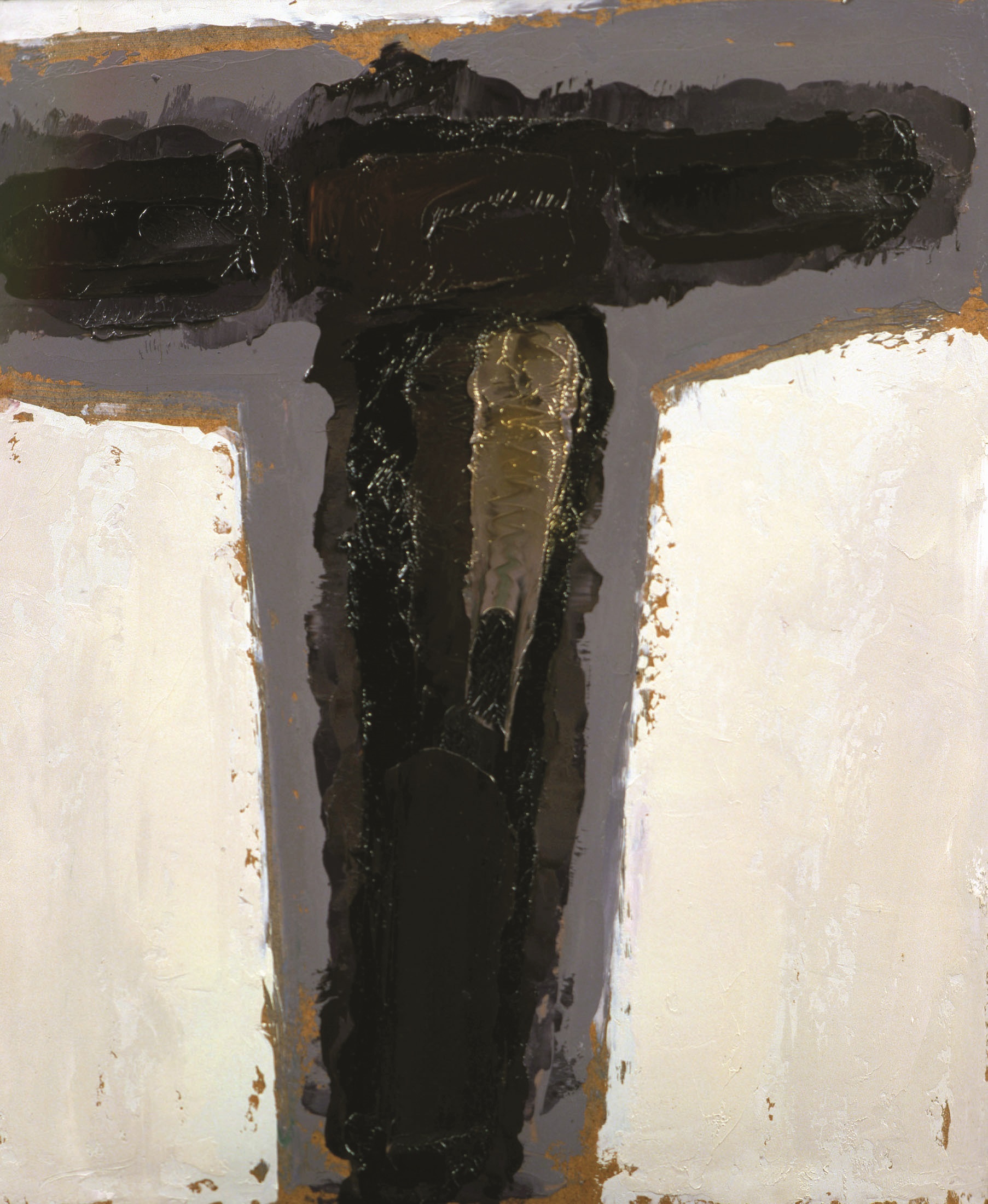The Transformative Power Of Suffering
The many faces of suffering — nightly we hear the counts: be they the ravaged faces of Syrian refugees, the millions of starving and impoverished children around the world, the violence of the bleakest neighborhoods of all inner cities, devastating natural disasters such as the earthquake in Haiti that killed over 300,000 people and left a million homeless in one dispassionate blow … and so on and on and on.
And the face of suffering can be very personal: a spouse who is suddenly diagnosed with a terminal illness, an accident that results in a young person’s complete paralysis, crushing the dreams of a full life. Perhaps it is the aloneness of being caught in a world of infinite noise and shallow connectivity. Perhaps it’s the imminence of one’s own death. The possibilities of real suffering are endless.
And then there is another level of suffering, a kind of suffering which comes from the acquired attitudes, beliefs, and enculturation of the human condition, what is sometimes known as mechanical or unconscious suffering — all the ways we humans manifest negativity and judgements, blame and shame, all the ways we become irritable, resentful, and unhappy when our preferences and expectations are thwarted. This is relative suffering — relative to one’s culture, upbringing, and level of consciousness. It’s optional and unnecessary, although often justified with endless reasons and stories.
The Cruciform Nature of the Universe:
He must increase; I must decrease.
John 3:30
Fr. Thomas Keating, a Trappist monk and one of the founders of Centering Prayer and the renewal of the Christian contemplative tradition, says the purpose of the universe is sacrifice—just as Sr. Ilia Delia says that evolution has a cruciform nature—that the cross marks all of cosmological and biological life and the whole leans forward to the fullness of life. Fr. Thomas illustrates it this way:
The whole of creation and life itself emerge out of chaos and out of the enormous collisions of galaxies in outer space. Protein molecules and other elements necessary for life are only possible when galaxies crash together and reach a certain temperature in which new elements can be formed. The message of creation is that out of physical or natural disasters on the galactic level come the conditions out of which more developed forms of existence and especially life can eventually emerge. A prime mistake we all tend to make is attributing to God our own very limited thoughts and perspectives about suffering … Persecution or opposition is a sign of a special calling from God and not a sign that God doesn’t love you. Rather it is sign that God is guiding you into the dynamics of genuine transformation that you see in nature. The transformation of lower forms of life is the only way evolution moves on to higher forms of life. … [In this process,] it is important for Christians to realize there is really no punishment in God.1
Christ as the Way
How is Christ the model for the transformation of suffering? Again, we turn to the wisdom of Fr. Thomas Keating:
When accepted, suffering leads to wisdom, which is the perception of the divine goodness and purpose in everything that happens. Wisdom, peace, and faith — that is to say, perfect trust in God — transform suffering into — I won’t quite say ‘joy’ — but give it a meaning that takes away resistance and one can then see a value in one’s suffering that is … well, God-like.2
The contemplative Christian tradition, which is experiencing a renewal in our times, invites one beyond belief and ritual into a daily apophatic practice of kenosis — the emptying of self and all the acquired programs that keep us unconscious, mechanically suffering, and thinking we are separate from the Living God present within us and in all reality. Rooted in daily silence, solitude, and deep listening through practices like Centering Prayer, Lectio Divina, active prayer, guard of the heart, we consent to God’s presence and action within and without, surrendering little by little each day. Over time, the fruits of this consent bring a deep trust in an Abiding Presence, despite the real difficulties and sufferings that come. We are gifted with the will to intentionally suffer — in our own experience and with humanity at large, participating in what Fr. Thomas calls “vicarious suffering.” We are able to be whole-makers in a deep, intentional and invisible way, offering our rooted presence in service to the whole of life — to strangers in need, to loved ones in travail, to the at-risk environment.
In the micro and the macro, the evolution of the whole inches a little further along each day as we practice in silence, solitude, stillness of being, and a willingness to participate in the interior work of kenosis on behalf of the whole. Our practice matters. Death, resurrection, and ascension become every day experiences as Christ incarnates in us — fully human and fully divine — in the ordinary.
Both Jesus and Francis believed, lived, and taught that we dare not define love apart from suffering. Without suffering, “love” is mere sentimentality and not nearly enough to save the world — or anybody.3
Practice Approaches for the Transformation of Suffering
Beyond willingness, the transformation of suffering requires practical tools that can be applied in the circumstances of everyday life, tools that awaken and open us to the Indwelling Presence and trust in the Holy Spirit, no matter what is happening. Here are a few resources and suggestions:
- The Welcoming Prayer, sometimes referred to as The Welcoming Practice is a powerful, embodied practice to engage and pray with suffering and experiences of any kind, with the lifetime of “issues in the tissues” we all have accumulated. It affirms that God is always with us, no matter what we are experiencing — we are in God and God is in us. You can find an introduction to the Welcoming Prayer here.
- A fundamental premise of Tibetan training, or Lojong, is to take whatever suffering and adversity you are experiencing and incorporate it as part of your spiritual practice and use it to expand your capacity for compassion. This practice can be incorporated with the Welcoming Prayer using this process:
- Move deeply into the experience of suffering or adversity or diminishment.
- Feel your feelings. Sense your bodily sensations.
- Think of the myriads and myriads of others around the world who are experiencing the same situation.
- Breathe. Welcome. Welcome. Welcome.
- I affirm the Oneness of all creation. May my suffering spare others from a similar suffering.
- Understand and how you can support others in their suffering. Consider this perspective and suggestion from Peter Traben Haas:
When we suffer it’s as if it is a teacher to us, an inward school. And as we learn from this season of teaching, aspects of our self are worn down, and made more humble, empathetic, even wise. Perhaps such fruit emerges after we first encounter resentment, anger, irritation, sadness.
A lesson to learn from this is that when you speak to someone who is afflicted or suffering (as we all are, at different points in our life) remember that they don’t need a teacher. They already have a teacher in the form of their affliction. What we can offer is our encouragement – which is very different than helping or trying to solve a problem.4
- Intentionally utilize the energy generated through suffering. In his book exploring Teilhard de Chardin’s approach to suffering, author Louis Savary explains how Teilhard firmly believed we could invest and direct the energy we generate in suffering to advance evolutionary growth, as if it were fuel—like coal, oil, natural gas or solar energy. Just as any energy source can be used in productive ways or wasted, we can choose to direct and channel our suffering for more positive outcomes. In outlining various ways to invest and channel this energy source he offers the following:
… if you have no particular focus for your suffering energy, you may simply present it to Christ or to the Creator to be used for whatever is needed at the moment to move God’s project forward. Teilhard’s point is that rather than waste your suffering energy, at whatever stage of suffering you may be, there is always someone or some place that can use your energy.5
- Learn more about how we can approach and engage with suffering as an evolutionary and transformative process in and through the divine/human experience. See The Transformation of Suffering online course, co-hosted by Contemplative Outreach and Spirituality & Practice. The content includes excerpts from various Thomas Keating videos and writings, the wisdom of numerous contemplative witnesses, and the practice of Visio Divina with the crucifix images of artist William Congdon. Each email contains suggested practices with different angles to engage various kinds of suffering in oneself, others, and the world at large.
References
- Fr. Thomas Keating, Heartfulness: Transformation in Christ
- Fr. Thomas Keating, The Gift of Life: Death & Dying, Life & Living companion book
- Fr. Richard Rohr, OFM, When You Say Yes to Love, You also Say Yes to Suffering
- Peter Traben Haas, The Contemplative Companion for Monday, June 12, 2017
- Louis M. Savary, Teilhard de Chardin: Seven Stages of Suffering: A Spiritual Path for Transformation
Pamela Begeman and Mary Anne Best are co-creators of the online course The Transformation of Suffering developed by Contemplative Outreach and hosted by Spirituality and Practice.
 View print-friendly version
View print-friendly version
1 Comment
Related Posts

InCarnation: God’s Life is Our Life
Yesterday, I stopped by a local Starbucks for a hot coffee. Outside the store sat a homeless man asking for money and food. I was struck by his appearance—his sad…



This insight is so useful in these times of trouble. Thank you for helping others to grow in Christ through this information.